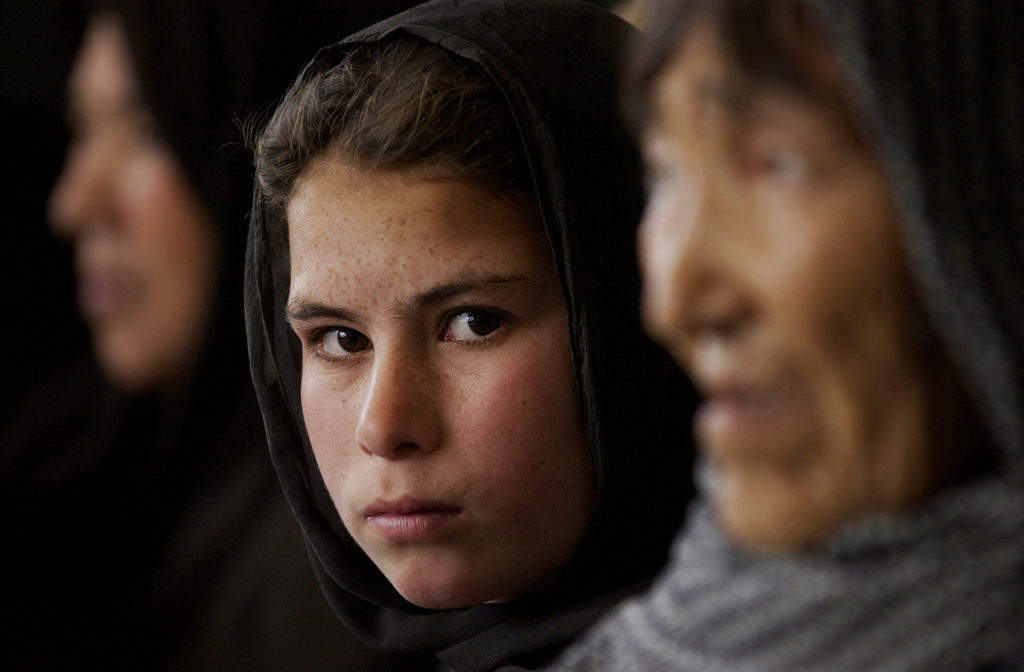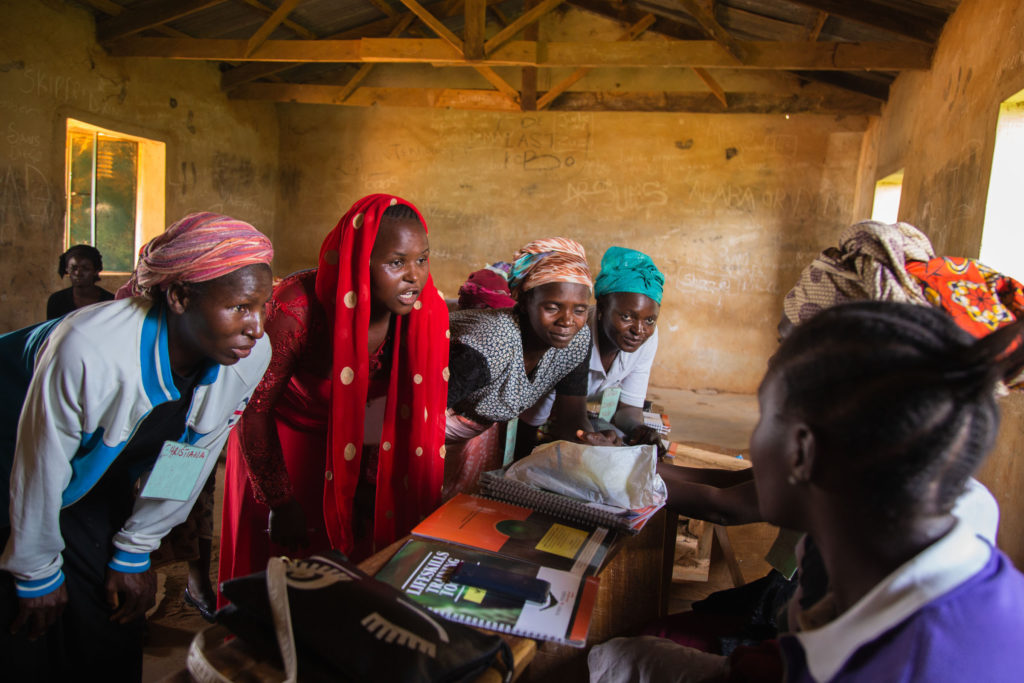This International Women’s Day, as the world talks about women’s contributions and big brands claim to be empowering women by turning packaging pink for the day, I have to ask:
Where’s the money?

Masoma, 12, attends a class for at Women for Women, where they recieve fifteen dollars a month is assistance. She is attending the class as her mother is sick. (Rada Akbar)
In the U.S., only 1.6 percent of charitable contributions went towards causes supporting women and girls. Globally, only 0.12 percent—less than a percent—of the $41 billion allocated for humanitarian response went towards violence against women and girls.
From my years of experience in international development and human rights, I know: When it comes to conflict, women and girls pay the price.
Whether in media, advertisements, corporate policies, national and international goals, everywhere I look I see people saying that we need to advance women’s equality. But with no money to back it up, I can’t help but think it’s mostly all talk.
If we’re going to actually achieve gender equality, it’s time people put their money where their mouth is.
Invest Where the Need is Greatest
Twenty-five years after the commitments made in Beijing to advance women’s rights, we are far from meeting those goals, just as we are far from meeting the Sustainable Development Goals in 2030. And the two issues of women’s rights and a better, more sustainable future for all are tied.
Thomas Piketty’s theory to reduce economic inequality suggests that we must invest in those living in the economic bottom 25 percent. With women and girls making up 70 percent of all people living in poverty, this would also reduce inequality between men and women.
Money Goes Further
Investing in women not only yields greater returns than investing solely in men but is transformative for communities, especially those affected by poverty and conflict. When women have agency in household expenses and financial power, they reinvest 90 percent of their income into their family, versus only 40 percent from men.
It works for girls, too: With women and girls often excluded from education, they end up excluded from their societies, economically, politically and socially. Not only does ensuring girls have educational opportunities increase their literacy rate and power later on, but for every 10 percent of girls who go to school, a country’s GDP can be expected to rise an average 3 percent.
Transformative Returns
At the highest levels of government globally, only 22 percent of the world’s leaders are women. Yet studies show that when women are part of peace processes, agreements are 35 percent more likely to last longer than 15 years.
We know that investment in the equality of women and girls has a causal effect on peace and security—a subject that remarkably does not have its own circle or agenda at the upcoming United Nations Commission on the Status of Women event.
The effect women’s leadership has on peace and stability happens at all levels. I see it in my work at Women for Women International: When women learn that they have human rights and a voice, they use it to build schools, to bring clean water to their communities, to stop violence against other women.
In northern Nigeria, our classes brought together women from both sides of a local conflict between herders and farmers. These women began a peace negotiation process between their two communities, bringing leaders from both sides to the table to establish terms for a peaceful coexistence.

2020 is a Pivotal Year for Women
Gender equality and women’s rights have never received so much attention. But as we look back and evaluate our progress, we will find that we are behind. Too many women, especially those living in fragile and conflict-affected states, go unseen and unheard.
As we begin drafting our paths forward, we must make sure that money is part of the plan.





